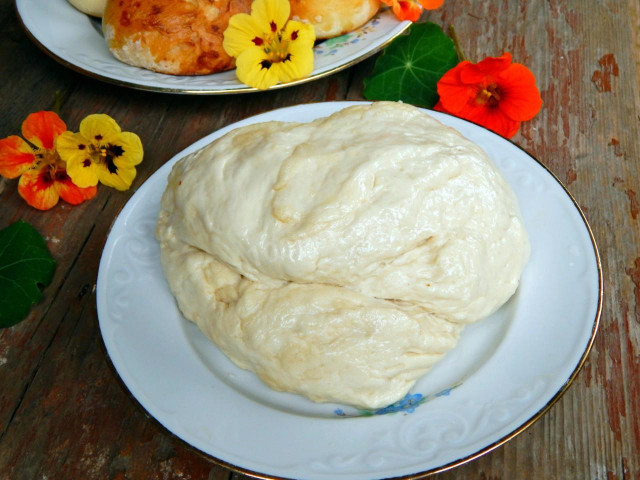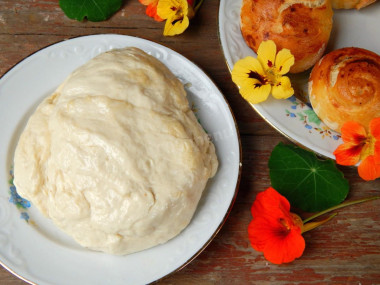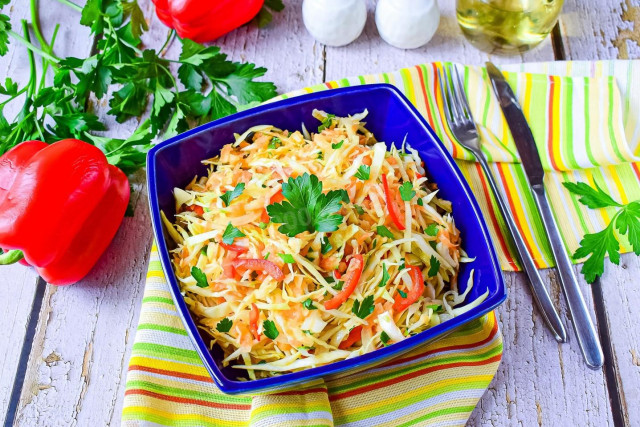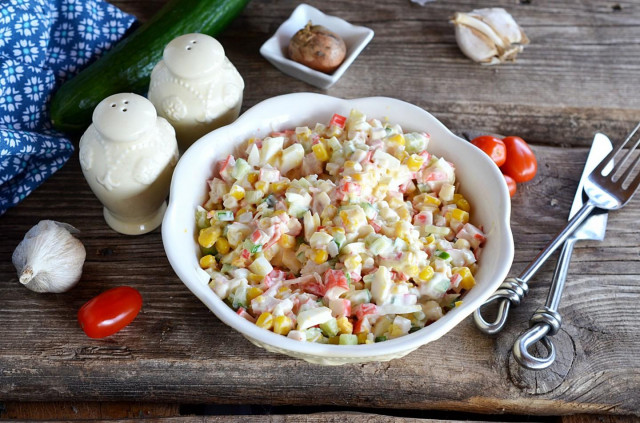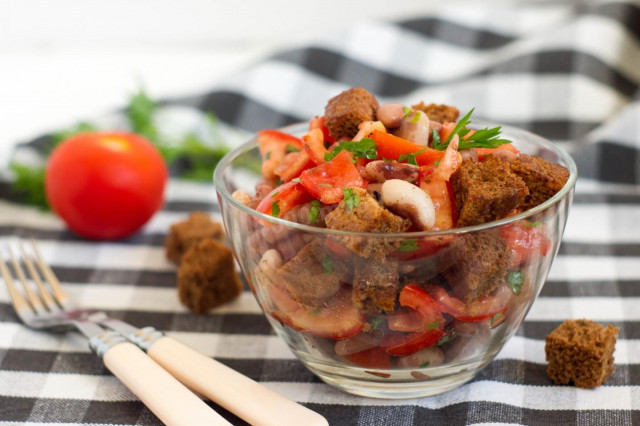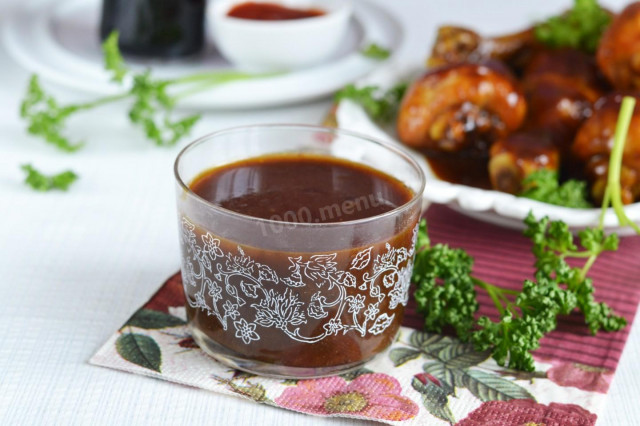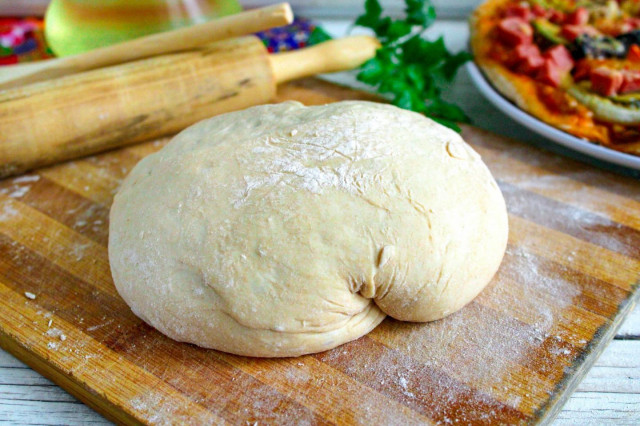Composition / ingredients
Step-by-step cooking
Step 1:

How to make muffin dough? This dough is prepared on sourdough. How to make sourdough? Pour a glass of warm milk into a deep bowl. Milk needs to be heated to t 37-38 degrees, you can do this using a microwave oven. Add a tablespoon of sugar to the milk and mix. Pour in a teaspoon of dry fast-acting yeast, mix thoroughly so that the yeast granules disperse. Add a tablespoon of wheat flour.
Step 2:

Stir until there are no lumps left. Cover the bowl with a towel (or tighten with cling film) and put it in a warm place for 20 minutes to activate the yeast. If the products are of high quality, everything is done correctly, then after a specified time a cap of yeast foam should appear on the surface of the sponge.
Step 3:
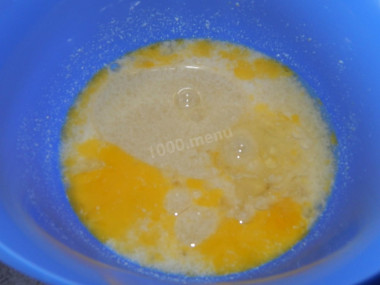
In another bowl, combine the chicken eggs with the remaining sugar, salt and melted and cooled to room temperature butter. Mix well or beat these products with a mixer until a homogeneous mixture is obtained.
Step 4:
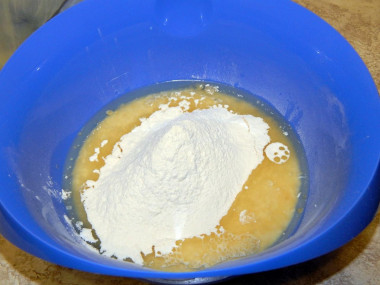
Pour the sourdough into a bowl with the creamy egg mixture. Mix it up. Start pouring in the sifted wheat flour. In order for the buns to turn out especially airy and tender, flour should be used of the highest grade and be sure to sift it, preferably repeatedly, in order to saturate the flour with oxygen. Add flour in parts, kneading the dough with a spoon each time.
Step 5:

When it becomes difficult to mix the dough with a spoon, put it on a floured table and continue kneading, adding flour if necessary. Be prepared for the fact that flour may need more or less than indicated in the recipe. Focus not on the amount of flour, but on the desired consistency of the dough.
Step 6:
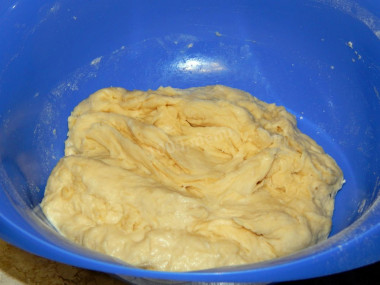
The dough should turn out smooth, elastic and obedient, slightly sticking to the hands. Brush it with vegetable oil and put it back in the bowl. Cover the bowl with a towel and put it in a warm place to rise for a couple of hours.
Step 7:
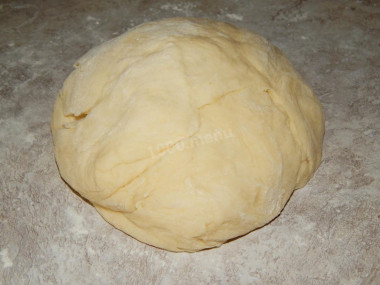
Then knead the dough, let it rise again and proceed to baking buns. Bon appetit!
Be sure to wash the eggs before use, as even the seemingly clean shell may contain harmful bacteria. It is best to use food detergents and a brush.
Butter can be melted in the microwave or in a water bath.
How to melt butter in the microwave?
Cut the butter into small pieces and place it in a special container. To prevent the oil from splashing when heated, cover the oil vessel with a paper towel. The oil should be melted either at the lowest power or in defrosting mode. At first, five seconds will be enough. Next, if the butter has not melted yet, set it again for 5 seconds and start the microwave. Repeat the process several times until the desired result.
How to melt butter in a water bath?
You will need two containers of different diameters. Pour water into a large one and put it on the stove. Place the smaller container on top so that it is submerged in water by about half. Put the sliced butter into it. Under the influence of boiling water, the oil will begin to melt. Stir the oil slightly to speed up the process. As soon as the pieces of oil are completely dissolved, remove the container from the stove.
The liquid in which yeast is bred should be pleasant to the touch, no higher than 40 degrees. Why is this important? In a warm environment, yeast is well activated, in a hot one it will die, and in a cold one it simply will not work. To avoid unpleasant surprises, check the yeast before mixing with the rest of the ingredients. Pour a little warm milk into a bowl, stir in the yeast. Cover the bowl with a kitchen towel and put it in a warm place without drafts for 10-15 minutes. During this time, a foam yeast cap should appear on the surface of the sponge. If this did not happen, then the fermentation process has not started (the yeast is overdue or spoiled). In this case, it is worth taking other yeast, otherwise baking will not work.
Caloric content of the products possible in the composition of the dish
- Whole cow's milk - 68 kcal/100g
- Milk 3.5% fat content - 64 kcal/100g
- Milk 3.2% fat content - 60 kcal/100g
- Milk 1.5% fat content - 47 kcal/100g
- Concentrated milk 7.5% fat content - 140 kcal/100g
- Milk 2.5% fat content - 54 kcal/100g
- Granulated sugar - 398 kcal/100g
- Sugar - 398 kcal/100g
- Butter 82% - 734 kcal/100g
- Amateur unsalted butter - 709 kcal/100g
- Unsalted peasant butter - 661 kcal/100g
- Peasant salted butter - 652 kcal/100g
- Melted butter - 869 kcal/100g
- Vegetable oil - 873 kcal/100g
- Salt - 0 kcal/100g
- Wheat flour - 325 kcal/100g
- Chicken egg - 80 kcal/100g
- Dry yeast - 410 kcal/100g

